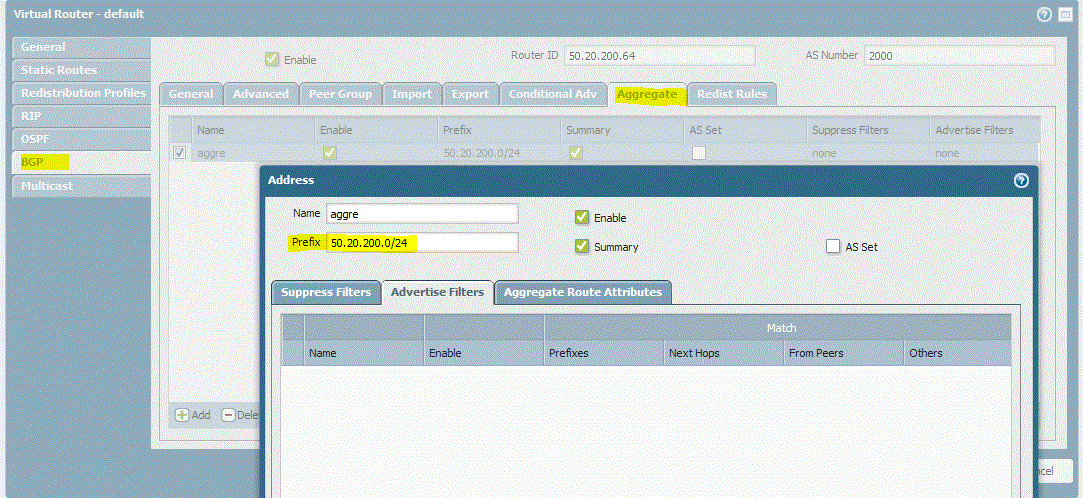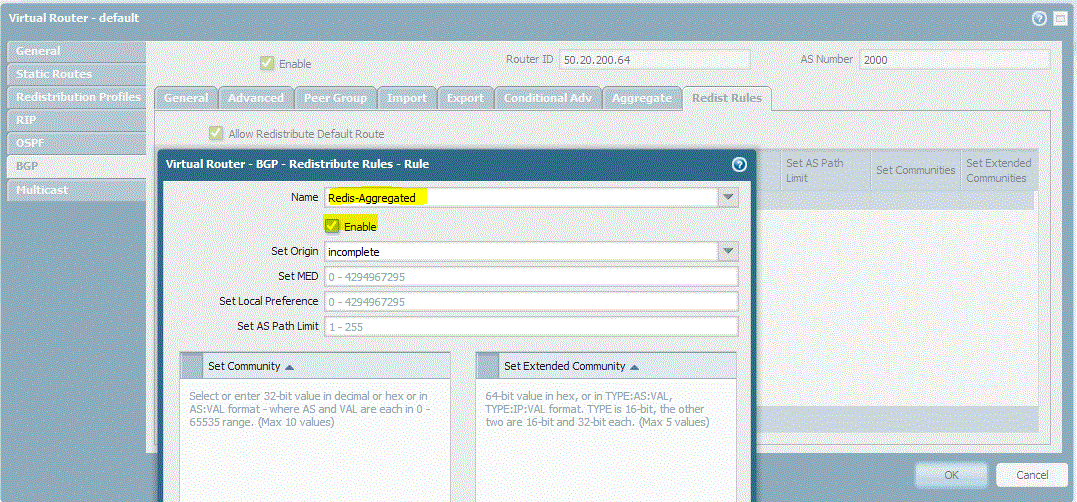How to Aggregate Routes and Advertise via BGP
Resolution
-
Route aggregation allows you to combine groups of routes with common addresses into a single entry in the routing table. This decreases the size of the routing table as well as the number of route advertisements sent by the routing device.
-
Route aggregation works when it has one or more contributing route.
-
A contributing route is an active route that is a more specific match for the aggregate destination.
-
Example: for the aggregate destination 50.20.200.0/24 , route 50.20.200.64/26 is a contributing route, while 50.20.200.208/28 ,50.20.200.224/28 are not.
Requirement
-
Aggregate Route : 50.20.200.0/24
-
Contributing route : 50.20.200.64/26
-
Non-Contributing route 50.20.200.208/28 ,50.20.200.224/28
Routing Table

Step1: Configure the Redistribution Profiles with Destination as the Routes that need to be aggregated or summarized.

Step 2: Configure the Aggregate section with the aggregated route. This route would be a summary of the Destinations configured in Redistribution Profile and advertised to the EBGP neighbor.

Step 3: Configure the Redistribution Rule selecting the Redistribution Profile configured with Step1 and commit the changes. .

Verification
-
Check the Local RIB which shows the component of the Aggregated Route present in the Routing Table.

-
RIB Out shows the Aggregated Route 50.20.200.0/24 being advertised.
